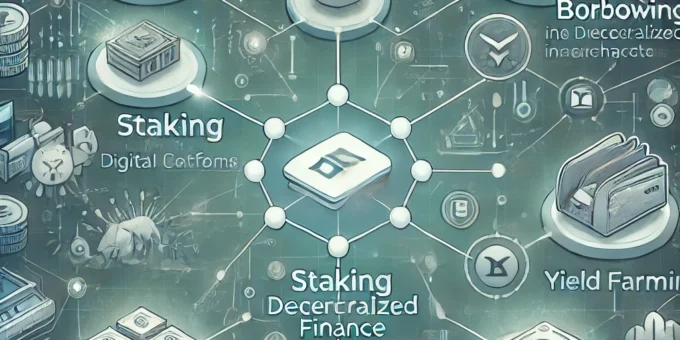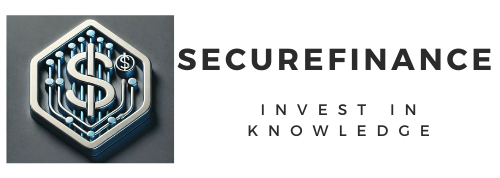
Decentralized finance, or DeFi, represents a paradigm shift in how we think about and interact with financial services. Unlike traditional finance, which relies on intermediaries like banks, DeFi uses blockchain technology to create a peer-to-peer network where users can directly lend, borrow, and trade assets without the need for a centralized authority. This innovative approach to finance has attracted millions of users worldwide, drawn by the promise of greater accessibility, transparency, and control over personal assets. In this guide, we will explore how to use DeFi platforms, starting from the fundamentals of creating a digital wallet to understanding advanced strategies like yield farming and staking.
What Are DeFi Platforms?
DeFi platforms are decentralized applications (DApps) built on blockchain networks that enable various financial activities, including lending, borrowing, trading, and investing, without traditional financial institutions. By eliminating intermediaries, these platforms allow for faster and often cheaper transactions, available to anyone with internet access. DeFi platforms like Aave, Uniswap, and Compound empower users to interact directly with the blockchain through user-friendly interfaces while relying on smart contracts to automate transactions.
Benefits of Using DeFi
One of the main reasons DeFi has gained popularity is due to its unique benefits over traditional financial systems:
- Accessibility: DeFi platforms are open to anyone with a digital wallet, removing the barriers often imposed by banks.
- Transparency: All transactions on DeFi platforms are recorded on a public blockchain, which promotes trust.
- Control Over Assets: Users retain full control over their assets without needing a third party.
- Innovation and Flexibility: New financial products and opportunities like yield farming and liquidity pools have emerged, offering creative ways to earn on investments.
How DeFi Works
DeFi operates on blockchain networks, primarily Ethereum, through smart contracts—self-executing contracts with the terms directly written into code. These smart contracts enable various financial activities without needing a middleman, such as loans on platforms like Aave or trades on decentralized exchanges (DEXs) like Uniswap. The transparency and immutability of blockchain technology ensure that transactions are secure, fast, and verifiable by anyone on the network.
Popular DeFi Applications
DeFi offers a wide range of applications across different financial services:
- Decentralized Exchanges (DEXs): Platforms like Uniswap and SushiSwap enable users to trade crypto assets directly.
- Lending and Borrowing: Platforms like Compound and MakerDAO allow users to lend assets for interest or borrow against collateral.
- Yield Farming: Users earn rewards by providing liquidity to DeFi platforms, creating an additional revenue stream.
Choosing the Right DeFi Platform
Selecting the right DeFi platform is critical for both safety and returns. When evaluating platforms, consider these key factors:
- Security: Platforms audited for security are more reliable. Check if the platform has been vetted by reputable auditors.
- Reputation: Community feedback and platform reviews can help gauge trustworthiness.
- Features and Fees: Compare transaction fees, supported assets, and unique features to find a platform that meets your needs.
Setting Up a Digital Wallet
A digital wallet is essential for using DeFi platforms, as it stores and manages your cryptocurrency assets. Popular wallets like MetaMask and Trust Wallet enable users to access and interact with DeFi platforms. Setting up a wallet typically involves creating a secure password, saving a recovery phrase, and safeguarding these credentials, as they are vital for accessing your assets.
Connecting Your Wallet to a DeFi Platform
Once your wallet is set up, you can connect it to a DeFi platform. Most platforms provide a Connect Wallet option. Upon clicking this, your wallet (such as MetaMask) will prompt you to approve the connection, granting the platform permission to interact with your wallet for transactions.
Using Decentralized Exchanges (DEXs)
On decentralized exchanges like Uniswap, users can trade assets directly without an intermediary. DEXs use liquidity pools where users provide their crypto assets to facilitate trades. When you swap tokens on a DEX, the platform automatically matches your trade with assets in the liquidity pool, charging a small fee, which is distributed to liquidity providers as an incentive.
Lending and Borrowing on DeFi
Lending and borrowing on DeFi platforms is relatively straightforward. Users can deposit their crypto as collateral and borrow other assets based on its value. Interest rates are typically algorithmic, fluctuating based on supply and demand. DeFi lending is popular because it allows users to retain exposure to their assets while accessing additional funds.
Yield Farming and Liquidity Mining
Yield farming involves lending or staking cryptocurrency on DeFi platforms in exchange for rewards. Liquidity mining, a subset of yield farming, rewards users who provide liquidity to platforms. This strategy can generate substantial returns but comes with the risk of impermanent loss—a potential decrease in asset value due to market fluctuations.
You can also read: How to Integrate Blockchain Technology into Your Company
Staking on DeFi Platforms
Staking is another way to earn passive income on DeFi platforms. Users lock their assets in a platform for a period to support network operations, receiving staking rewards in return. Many DeFi platforms offer staking opportunities, such as Ethereum 2.0 staking or staking tokens on platforms like Synthetix.
